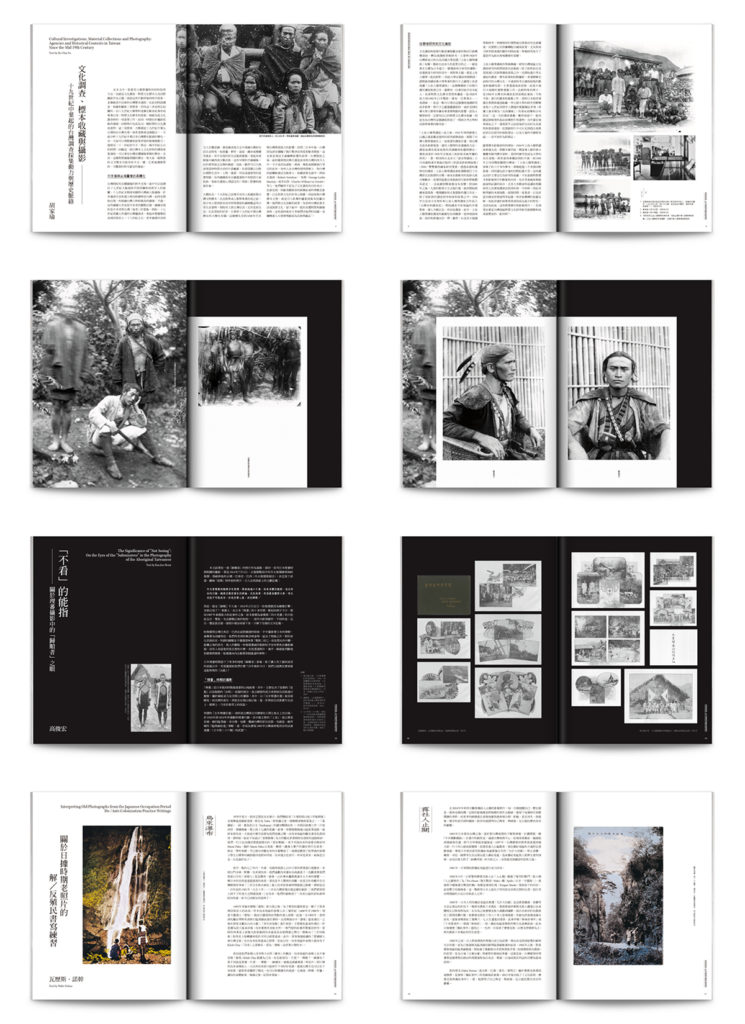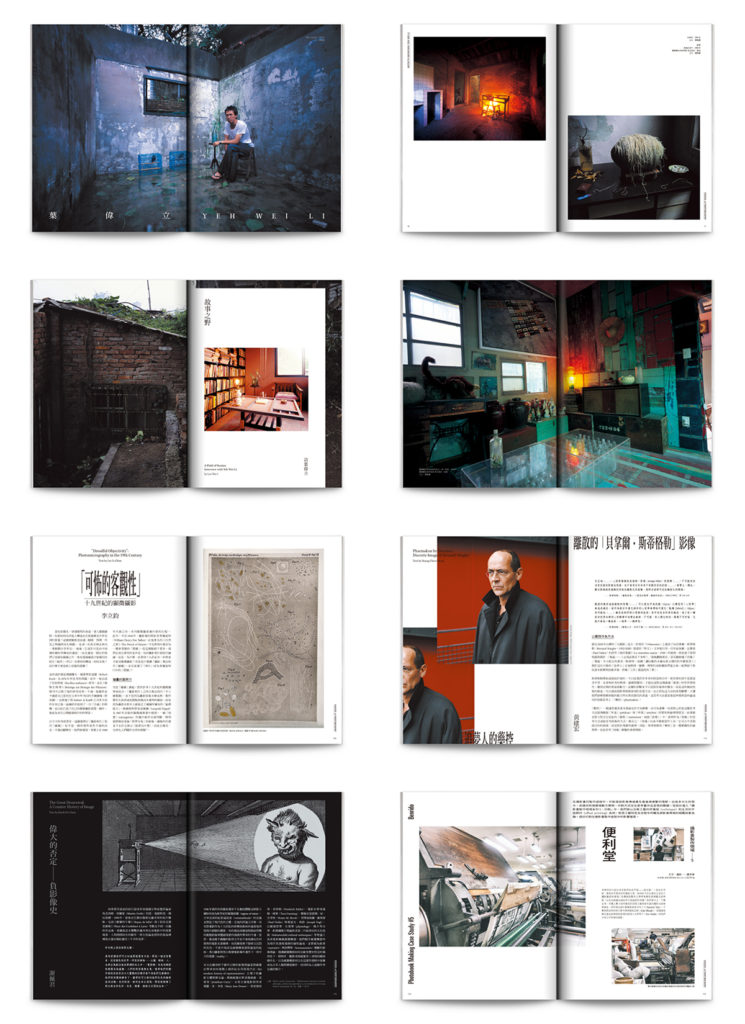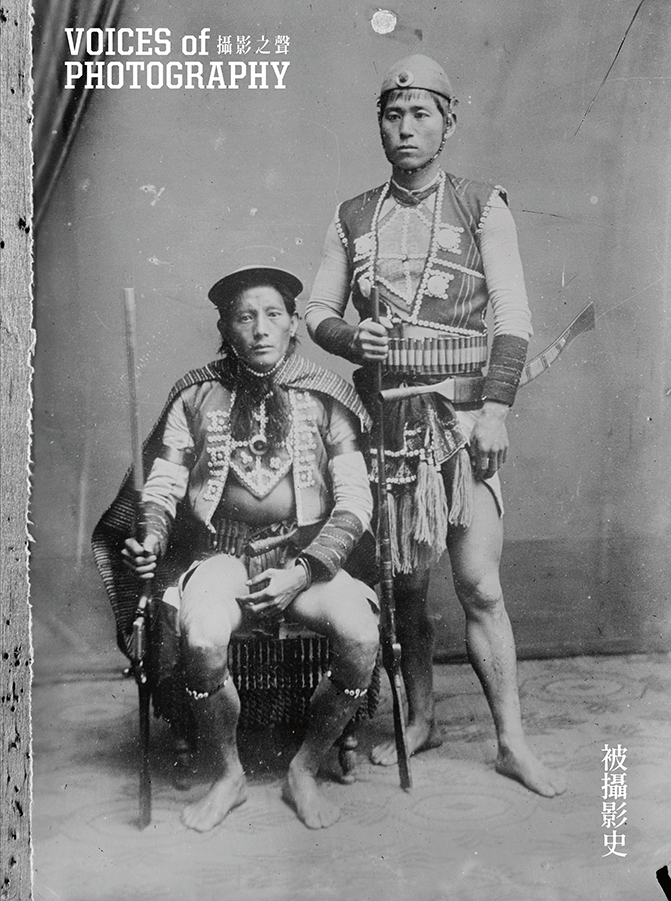延續我們對於攝影史的關注,本期審視屬於我們自身的攝影經驗──被攝影的歷史。從台灣的殖民史出發,自十九世紀中葉以降歷經的人類學調查採集、二十世紀初隘勇線推進下的暴力顯影,到帝國博覽會裡的「台灣」意象與人種展示──這是一段最為系統性地將台灣影像化的初始時期。我們如何成為被攝影的對象?如何化為一具科學標本和一幅想像圖騰?如何在視覺上被納編(或排除)於國族與文化的整頓編程,並糾結至今?此一影像的潛歷史──被攝影的歷史──是我們返視「攝影史」的一處起點。
藉此,本期試圖反詰「歷史」,思考致使我們「成為影像」、「進入攝影史」的支配與佈局,嘗試突破以往「攝影(者)的歷史」框架,開啟我們的「被攝影(者)的歷史」覺察,或許將能發現對我們而言更為重要的攝影的歷史遺產,生成屬於我們的另翼影像史觀。
專題中收錄的影像與文論,標記了我們在「被攝影」的歷史經驗裡的複雜和衝突──我們從已故人類學者胡家瑜對早年台灣人類學田野調查至戰後發展的介紹專論開始,探看影像採集的知識化歷程及當代意涵;黃翰荻追尋日本人類學者鳥居龍藏與森丑之助在殖民年代的台灣原住民族群踏查足印,細述二人巨大的歷史身影;高俊宏在總督府「理蕃時期」的諸多「討伐」寫真帖中,重新諦視「歸順者」肖像裡的幽微目光;瓦歷斯.諾幹以解/反殖民書寫,展現自身與族人生命經驗裡實切的影像歷史感知;松田京子則以東京拓殖博覽會中對殖民地的活人陳列展演,析解形塑「台灣」的視覺策略。
本期Artist’s Showcase單元,我們與藝術家葉偉立進行長篇訪談,呈現他這些年來以行動介入所構成的獨特影像場域,記錄其未曾間斷的勞作沉思。而在影像論述單元,本期新闢由影像研究者李立鈞執筆的科學攝影專欄,揭示平時隱沒在科學實踐中的「影像問題」,首篇從圖繪細菌與拍攝細菌在十九世紀引發的論爭談起,一探科學家對於攝影「客觀性」的認知辯證。謝佩君接續前期對於影像/視覺理論的引介,深入闡論歐美學界近年如何反駁過去以視覺機具作為現代性發展的線性觀點。黎健強探究香港攝影源流的連載系列,揭載「作為影像的香港」在1850年代末首次出現於可供西方觀眾賞玩的遠東立體照片。此外本期亦特邀黃建宏撰文紀念近期辭世的法國哲學家貝拿爾.斯蒂格勒,記述其影像哲理綿延的技術與時間之論。
在本期出版(焦頭爛額)之際,也正是《攝影之聲》邁入第十年的開端,回想起來真是一段不可思議的旅程。感謝所有的讀者共同撐起這份小刊,也要再次感謝參與《攝影之聲》、支持我們的朋友與工作伙伴,給予我們面對艱困的勇氣,繼續在蜿蜒的道路上行進。

As we continue on the topic of the history of photography, we turn to our own photography experiences in this issue – our history of being photographed. It takes root in Taiwan’s colonial history, from the collection of anthropological surveys in the 19th century, to the acts of violence at the defence lines as they pushed on during the Japanese colonial era in the early 20th century, as well as the exhibition of the “Taiwanese” imagery and ethnicity at various expositions held during the Japanese colonial rule. These form the beginnings of a systematic effort to visualize Taiwan. How did we become the photographed, a scientific specimen, a totemic image? How did we become visually part of (or excluded from) the rectification process of nationality and culture, that continues to trouble us till now? The veiled history of such an image – the history of being photographed – guides the beginning of our journey of looking back at the “history of photography”.
With this, we attempt to cross-examine “history” and think through the control and disposition that led us into “becoming an imagery” and “going into the history of photography”, hoping to break free from the existing framework of “the history of the photograph(er)” and enlighten our awareness of the “history of the photographed”. We reckon this could allow us to discover the historical heritage of photography that is even more important to us and generate our very own alternative view of the history of photography.
The collection of imagery and essays in this series marks the complexity and conflicts in our historical experience of “being photographed”. We begin with the late anthropologist Hu Chia-Yu’s field research of Taiwan’s anthropology from the early years to the post-war period as we explore the knowledge-based development and contemporary meaning of imagery collection. Huang Han-Di traces the footsteps of Japanese anthropologists Torii Ryuzo and Mori Ushinosuke in their study of the Taiwanese indigenous peoples in the colonial era, detailing the historical impact that they had. Kao Jun-Honn takes a second look at the faint gaze in the eyes of those who had pledged allegiance, as captured in the many portraits of the “submissives” kept at the Governor-General’s office during the Japanese rule. Walis Nokan expresses his and his fellow people’s real perception of the history of photography as they had experienced it in his de-/anti-colonization writings. Matsuda Kyoko analyses the visual strategy of shaping “Taiwan” through the living displays at the Tokyo Colonization Exposition of 1912.
In this issue’s “Artist’s Showcase”, we feature an in-depth interview with artist Yeh Wei-Li, showing our readers his unique field of imagery that extends from his art of intervention, a record of his neverending contemplation with regard to labor and art. Moving on to essays on visual imagery, we present a new scientific photography column by imagery researcher Lee Li-Chun, who unveils the “imagery problem” that underlies scientific practice, beginning with cognitive dialectics of “objectivity” of photography by scientists that stemmed from the debate sparked by illustrating and photographing bacteria in the 19th century. Hsieh Pei-Chun continues with her introduction to imagery/visual theory from an earlier issue, and explains in detail how Western academia has refuted the existing linear view of visual machinery as a modern development. Edwin K. Lai’s series on the origins and development of Hong Kong photography tells us about the first 3D photograph from the Far East that aimed to entertain a Western audience with “Hong Kong as an image” in the late 1850s. In addition, we specially invited Huang Chien-Hung to commemorate the French philosopher Bernard Stiegler, who had recently passed, and the continuous techniques and time that stems from his philosophy of imagery.
At the same time as we (run off our feet to) prepare for the publication of this issue, Voices of Photography is going into its 10th year, and what an incredible journey it has been. We sincerely thank all our readers for keeping us going, and express our heartfelt gratitude once again to all our friends and partners who have worked with us and given us the courage to overcome our difficulties to march on on this winding road.

本期目錄 Contents
文化調查、標本收藏與攝影
——十九世紀中葉起的台灣調查採集動力與歷史脈絡
Cultural Investigations, Material Collections and Photography:
Agencies and Historical Contexts in Taiwan Since the Mid 19th Century
胡家瑜 Hu Chia-Yu
「空中鳥跡」與「依風彩畫」——寄鳥居龍藏與森丑之助
“The Trail of Birds in Flight” and “Paintings in the Wind”: A Letter to Torii Ryuzo and Mori Ushinosuke
黃翰荻 Huang Han-Di
「不看」的能指——關於理蕃攝影中的「歸順者」之眼
The Significance of “Not Seeing”: On the Eyes of the “Submissives” in the Photography of the Aboriginal Taiwanese
高俊宏 Kao Jun-Honn
關於日據時期老照片的解/反殖民書寫練習
Interpreting Old Photographs from the Japanese Occupation Period De-/Anti-Colonization Practice Writings
瓦歷斯.諾幹 Walis Nokan
人類的「展示」與殖民地再現——以1912年拓殖博覽會為中心
The “Exhibition” of Mankind and the Resurgence of Colonization: A Look at the Tokyo Colonial Exposition of 1912
松田京子 Matsuda Kyoko
如何「做」視覺民族誌?——讀《學做視覺民族誌》
How to “Do” a Visual Ethnography?: Understanding Doing Visual Ethnography
顧錚 Gu Zheng
我們可以祛除帝國主義嗎?——《潛在的歷史》的指引
Can We Unlearn Imperialism?
Methods and Lessons from Potential History by Ariella Azoulay
史蒂芬.席海 Stephen Sheehi
Artist’s Showcase: 葉偉立 Yeh Wei-Li
故事之野——訪葉偉立
A Field of Stories: Interview with Yeh Wei-Li
李威儀 Lee Wei-I
「可怖的客觀性」——十九世紀的顯微攝影
“Dreadful Objectivity”: Photomicrography in the 19th Century
李立鈞 Lee Li-Chun
偉大的否定——負影像史
The Great Disavowal: A Counter History of Image
謝佩君 Hsieh Pei-Chun
追夢人的藥控——離散的「貝拿爾.斯蒂格勒」影像
Pharmakon by Dreamer: Discrete Image of Bernard Stiegler
黃建宏 Huang Chien-Hung
浴火重生的香港攝影(上)——最早為香港留下照片的攝影師
Hong Kong Photography: Rising from the Ashes (I) – The Photographer Who Left Behind the First Images of Hong Kong
黎健強 Edwin K. Lai
攝影書製作現場⑤ : 便利堂
Photobook Making Case Study #5: Benrido
羅苓寧 Lo Ling-Ning
七等生 : 重回沙河
Qi Deng Sheng(1939-2020): A Return to Sand River
李威儀 Lee Wei-I

